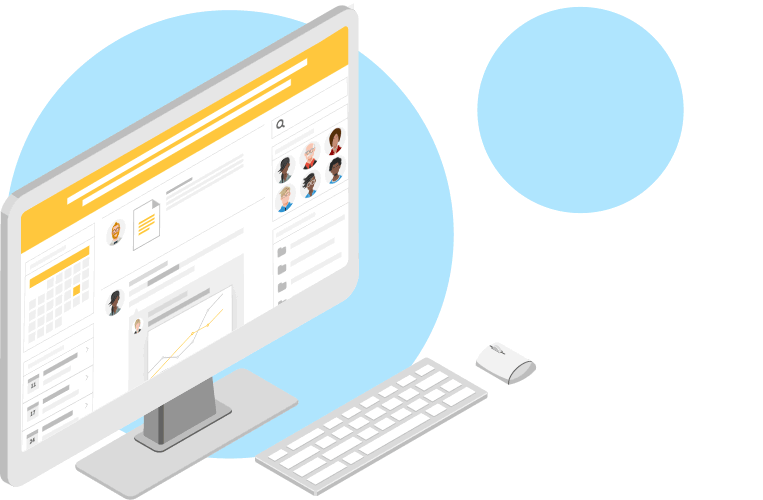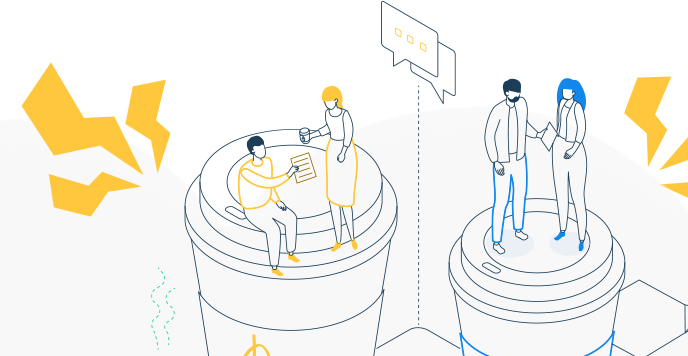
Post updated December 2022
We’ve all been in a situation where it feels like one person isn’t pulling their weight. Whether it’s a class project, a group presentation, or a simple game of tug of war, it can not only be frustrating, but can also impact the end result.
What is social loafing?
When this happens, what you’re witnessing is actually a phenomenon called “social loafing.” It can be defined as the tendency of people to put in less effort when they’re part of a group.
One of the key strategies to reduce the potential for social loafing is to create smaller groups or teams. Make it easier for team members’ work to be seen and supported. Smaller groups also enable individuals to form relationships and build a cohesive unit – all attributes that encourage individuals to contribute.
So, if this was an issue even in face-to-face situations, what happens now that work is increasingly remote and digital-focused since the start of the pandemic? There is not a simple answer, but one thing we feel certain about – it’s now more important than ever to ensure everyone has the tools they need to participate and succeed.
Negative effects of social loafing
Knowing what social loafing is, it shouldn’t be surprising that there are a number of issues it can lead to in the workplace (both in-person and digital). The primary effects it has on your team are:
- Lowers productivity: Perhaps the most obvious factor, if workers put in less effort, less work will get done. As more people on the team fall into the cycle of social loafing, this productivity will fall lower and lower.
- Breeds negativity and strain: This attitude not only leads to less effort, but also a mindset of negativity and frustration among the team. It can lead to some joining in social loafing, and others getting disgruntled and resentful in response.
- Weakens team spirit: The factors we’ve mentioned play into team spirit and unity decreasing, further hurting productivity, motivation, and more. A team that isn’t unified and can’t work effectively together will have frequent conflicts and struggle to get work done on time.
- Increased risk of burnout: Your top workers will be the least likely to give in to social loafing, meaning that the bulk of the extra work will be left on them. This greatly increases the risk that they will get burnt out and potentially look for other job opportunities at other companies.
All of these directly impact your bottom line and ability to retain high-quality workers, which is why it’s so important to identify social loafing in your workplace and eliminate it.
Causes of social loafing
Before we dive into preventative measures, let’s start by looking at some of the reasons social loafing occurs.
- Goal achievability and value: How attainable is what you’re working towards? If it seems impossible to one of the group members, they’ll be more likely to slack off, thinking their efforts are futile. Expanding on that, what is the point of the project? If achieving the goal feels meaningless, members may also be less likely to contribute.
- Group size: The more people there are in the group, the easier it is to hide! In small groups, people are more likely to feel that their efforts are vital to the project and will therefore contribute more. The larger the group, however, the less individual effort people will extend, thinking they can get away with it.
- It’s too easy: If the goal of the project seems easy to achieve and only requires minimal effort, that’s what you’ll get. You want to find the balance between something that will challenge the group, but not be so difficult that people give up before they’ve started.
- Skill differential: If certain members of the group believe they aren’t as skilled as their teammates, they’re more likely to let others do the work. This can also be seen as a lack of confidence as they may not see themselves as being able to contribute in a meaningful way.
- “The Sucker Effect”: When one or two people in the group start to slack off, others might notice and then also step back, in order to avoid being the person stuck with all the work. Hence, no one wants to be the “sucker” that’s left carrying the team single-handedly.
Social loafing also often comes down to motivation and involvement. People who are less motivated by a task (because it’s too hard or seems silly) may tend to become social loafers when part of a group. Because people assume that their efforts don’t matter and that they’re not personally responsible, they also assume that someone else will be the one to take action.

Social loafing examples
Using the example of Lenny (a fictional character, we promise), we’ll demonstrate some of the signs of social loafing to watch out for. Lenny is the guy in the group that seems just a little bit detached, even from day one. He doesn’t volunteer to take on tasks; he looks at the ground when everyone in the group is sharing their ideas; and when he does volunteer, it’s always the easiest option.
Lenny may also be new to the group or insecure in his skill sets, which causes him to take a step back. Or, he may not believe in the value of the project, so then is choosing to actively not participate (assuming he can get away with it).
How to reduce & eliminate social loafing
Fortunately, social loafing – although common – does not have to be inevitable. There are steps you can take using online tools and resources to help prevent the issues or behaviors that often lead to social loafing.

Create an online space to collaborate
Project plan using an online project room, in which you can outline the goals and assign tasks for each team member. It’s important to choose the right people for the right jobs and play to people’s strengths so no one feels like they can’t do what they’ve been assigned.
You can also use a dedicated team room to encourage team members to share updates, ask questions, exchange ideas, and work together on larger team goals or initiatives.

Get social
Enable social features on your department or team space on your intranet so everyone has an equal opportunity to participate. Use commenting and @mentioning to add a layer of visibility, but also keep things fun, casual, and easy to use.

Keep communication open
Make sure you’re checking in with each person in the group to ensure they understand the project and why it matters. Allow for private communications so team members can voice concerns at an individual level and not involve everyone unnecessarily.

Recognize contributions
Acknowledge and celebrate when people in the group contribute. You can do this privately or, even better, use your intranet or digital workplace platform. If they feel proud of their work and their contribution, it’s likely they’ll want to take on more!

Promote a teamwork culture
Create a space where everyone sees the value of working together. As cheesy as “teamwork makes the dream work” may sound, it’s essential to cultivate a culture in which everyone is working towards a common goal and knows that their individual contributions are important and unique to the success of the project.
Make sure everyone on your team is working toward the same goal. Learn how with these 7 teamwork strategies.
Make sure everyone plays a part
Regardless of where your employees are working, they’ll work best when they work together. Make sure everyone has the right tools for the job, and support they need to succeed. When everyone pulls their weight, goals turn into accomplishments.
Learn more about tools you can use to help prevent social loafing and promote teamwork with our Team Collaboration Solutions today!





